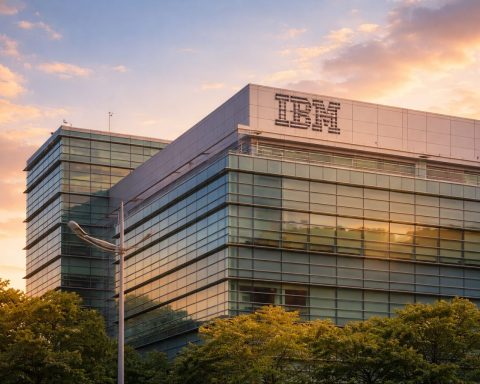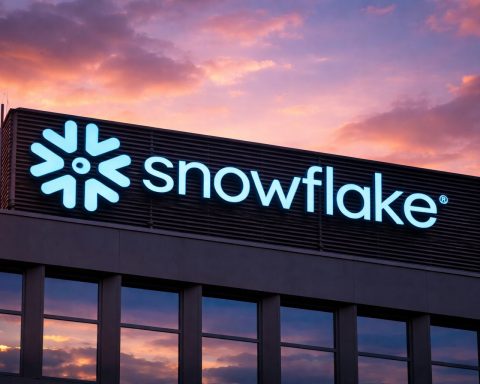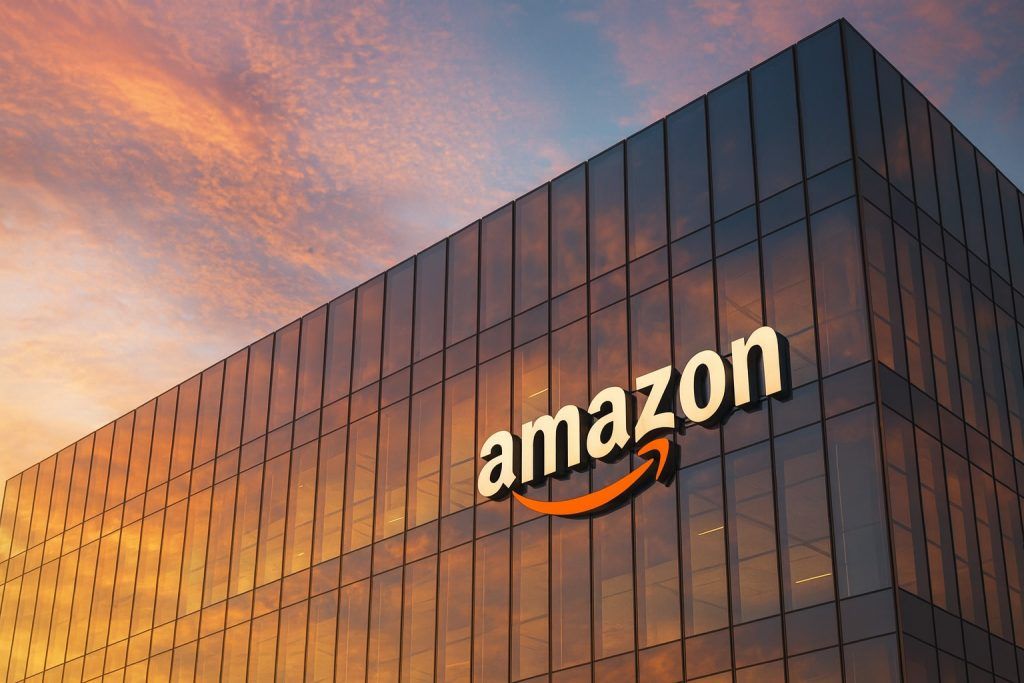- Stock price: GOOGL closed Oct 22 at about $251.69 [1], near its multi-year peak (~$255 in mid-Oct [2]). It has climbed roughly 3% over the past week and ~30% year-to-date [3].
- Earnings: Alphabet will report Q3 2025 results on Oct. 29 [4]. Analysts expect ~$2.27 EPS (about +7% YoY) and $84.6B revenue (~+13% YoY) for the quarter [5]. Full-year forecasts see ~23.6% EPS growth and 13.4% revenue growth vs. 2024 [6].
- AI & Cloud Investments: This week Google announced $24 billion in new AI/cloud projects – including a $15B data-center hub in India and $9B U.S. expansion [7]. Google Cloud revenue was up 32% YoY in Q2 [8].
- Advertising rebound: Google’s core ad businesses are roaring back. In Q2, Search ads +11.7% YoY and YouTube ads +13% [9], fueling a 13% overall revenue rise [10]. New AI features (e.g. generative “Search Overviews”) are boosting user engagement [11].
- Analyst outlook: Roughly 79% of analysts rate GOOGL a Buy [12], with an average 12-month target around $259 [13] (range ~$175–315 [14]). Key firms have raised forecasts: Goldman $288 [15], Scotiabank $310 [16], BMO $294 [17] (Oppenheimer’s bull-case is $300 [18]).
- Regulatory context: A Sept. court ruling spared Google a forced breakup (removing a “significant legal overhang,” said analyst Matt Britzman [19]), but antitrust scrutiny continues overseas. The UK has given Google’s search special oversight powers [20], and the EU last month hit Google with a $3.45 billion fine over ad-tech practices [21].
Alphabet Inc.’s Class A shares (NASDAQ: GOOGL) are trading near their highest levels in years. As of late Oct. 23, the stock hovers around $252, just below October’s intra-day high of ~$256 [22]. That puts Alphabet’s market value tantalizingly close to the $3 trillion milestone [23] [24] – a club shared only by Apple and Microsoft. In fact, after shares hit a new record high in mid-September, Alphabet’s stock had already rallied over 32% year-to-date [25]. “Alphabet’s stock [is] flirting with record highs,” noted one analyst, as both technical trends and fundamentals improve [26].
Recent momentum has been fueled by several factors. First, Google’s artificial intelligence and cloud investments are paying off. This week the company announced it will pour ~$24 billion into new AI/data-center projects globally [27]. The centerpiece is a $15 billion AI hub in India – Google’s largest-ever investment in that market [28] – plus about $9B for U.S. data centers. “We’re seeing a once-in-a-generation investment cycle around AI,” commented one tech strategist, with Google “all in” on the technology [29]. On Oct. 4 Google hosted its hardware “Made by Google” event, unveiling AI-boosted devices (the Pixel 10, Pixel Fold, Pixel Watch 4, etc.) that use next-generation Tensor chips and new language models [30]. These launches underscore how Google is weaving AI into its products, from phones to cloud services.
The cloud business is also booming. In Q2 Google Cloud revenue jumped 32% from a year ago – outpacing Amazon AWS (17.5%) and nearly matching Microsoft Azure (39%) [31]. Analysts credit Google’s custom 3nm AI chips and Gemini models for pushing cloud growth. Wall Street expects this to continue – Google Cloud just won a high-profile deal as the official cloud provider for the 2028 Los Angeles Olympics [32], highlighting its enterprise momentum.
Meanwhile, Google’s search and advertising engine is revving up. After a mid-’20s slowdown, ad sales have returned to double-digit growth. In Q2 Search ad revenue was $54.2 billion (+11.7% YoY) and YouTube ads were $9.8 billion (+13% YoY) [33], easily beating forecasts and driving Alphabet’s total Q2 revenue to $96.4 billion (+13% YoY) [34]. Google credits this to AI-powered features: new generative “Search Overviews” have kept users engaged, prompting more complex searches and ad clicks [35]. As one market observer put it, “Google’s ad businesses are reviving” thanks to these AI enhancements [36]. Analysts note that Google still controls roughly 90% of global search share, and its ad tech is improving – though rivals like TikTok and Amazon remain competitive threats.
Alphabet’s financial outlook is strong. Consensus forecasts for 2025 call for roughly +16% revenue growth and +27% EPS growth [37], driven by the ad and cloud rebounds. Zacks Investment Research notes analysts project roughly $334.8 billion revenue for 2025 (up 13.4% YoY) and $9.94 EPS (up 23.6%) [38]. For the upcoming quarter, Wall Street’s average is about $2.27 EPS (vs. $2.12 a year earlier) and $84.6B revenue [39]. Investors will watch Oct. 29’s earnings closely – another strong report could catapult the stock even higher.
Investor sentiment is overwhelmingly bullish. Dozens of brokerages rate GOOGL a Buy: out of nearly 50 analysts tracked by MarketBeat, 38 say Buy and 4 say Strong Buy [40]. Only holds – no sells. The average 12-month target is ~$259 [41], about 3% above today’s price. That target range ($175–315 [42]) reflects how expectations have lagged Alphabet’s rapid rise. Notably, Oppenheimer recently put a $300 price tag on GOOGL [43], arguing that Alphabet’s valuation and conservative estimates make it more attractive than peers. Scotiabank and BMO have also lifted targets to $310 and $294, respectively, citing a “clear recovery” in ads and Google’s AI leadership [44].
Fund and institutional ownership is also growing: Vanguard funds and others have quietly added to their GOOGL positions in recent quarters [45], and option sentiment leans bullish (put/call ratio ~0.69) [46]. Meanwhile, the broader tech rally is putting Alphabet in rare company: along with Apple and Microsoft, it briefly touched a $3 trillion valuation in mid-Sept [47] after the positive antitrust ruling.
Regulatory developments are a mixed bag. In the U.S., an early September court decision spared Google from having to spin off Chrome or Android, a verdict that added about $210B to Alphabet’s market cap overnight [48]. “This outcome removes a significant legal overhang,” noted Matt Britzman of Hargreaves Lansdown [49]. That relief helped boost confidence that Google’s core business (search on Chrome and Android devices) remains intact.
However, overseas pressures are mounting. On Oct. 10 the UK Competition & Markets Authority designated Google Search with new “strategic market” powers [50], signaling it can impose rules for fairness (e.g. ranking and data sharing) in search. The EU is also keeping the heat on: it just hit Google with a $3.45 billion fine under its Digital Markets Act for anti-competitive adtech practices [51], and is poised for more scrutiny. In the U.S., regulators (FTC, DOJ) continue probing Google’s ad tech dominance as well. So while the breakup risk may have eased, Alphabet still faces potential fines, oversight, and legislative changes in multiple jurisdictions.
Market reaction: Despite these regulatory clouds, investors have so far focused on the positives. When broader markets slipped on Oct. 22 (the Nasdaq fell ~0.9%) [52], Alphabet bucked the trend, finishing higher on the day. Traders note that even occasional pullbacks (like the early-Oct tech wobble) have quickly reversed as momentum resumed [53]. Most Wall Street strategists view Alphabet as a safer “big tech” play at present – its P/E is lower than some rivals, and the AI and cloud tailwinds are expected to support growth.
In summary, Alphabet’s stock is riding high on the back of rebounding ad sales, surging cloud revenue, and aggressive AI investments. Its near-term outlook hinges on delivering another strong earnings report on Oct. 29. If Google meets or beats expectations, analysts say the stock could well challenge its record price. As one TS2 commentator noted, “Alphabet’s stock is flirting with record highs as both technical and fundamental trends improve” [54]. For now, Google’s leadership in AI and advertising – not to mention its deep pockets and diverse product lineup (Search, YouTube, Cloud, Waymo, DeepMind, etc.) – keep investors upbeat about its future trajectory [55] [56].
Sources: Recent market data and analyst reports were drawn from industry publications and news outlets, including TS2.tech [57] [58] [59], Reuters [60] [61] [62] [63], NASDAQ.com [64] [65], Investopedia [66], Finviz (InsiderMonkey) [67], MarketBeat [68], and official Alphabet releases [69]. Each source is cited to support the above statements.
References
1. www.marketbeat.com, 2. ts2.tech, 3. ts2.tech, 4. abc.xyz, 5. www.nasdaq.com, 6. www.nasdaq.com, 7. ts2.tech, 8. ts2.tech, 9. ts2.tech, 10. ts2.tech, 11. ts2.tech, 12. ts2.tech, 13. www.marketbeat.com, 14. www.nasdaq.com, 15. finviz.com, 16. ts2.tech, 17. ts2.tech, 18. www.investopedia.com, 19. www.reuters.com, 20. www.reuters.com, 21. www.reuters.com, 22. ts2.tech, 23. ts2.tech, 24. www.reuters.com, 25. www.reuters.com, 26. ts2.tech, 27. ts2.tech, 28. ts2.tech, 29. ts2.tech, 30. ts2.tech, 31. ts2.tech, 32. ts2.tech, 33. ts2.tech, 34. ts2.tech, 35. ts2.tech, 36. ts2.tech, 37. ts2.tech, 38. www.nasdaq.com, 39. www.nasdaq.com, 40. www.marketbeat.com, 41. www.marketbeat.com, 42. www.nasdaq.com, 43. www.investopedia.com, 44. ts2.tech, 45. www.nasdaq.com, 46. www.nasdaq.com, 47. www.reuters.com, 48. www.reuters.com, 49. www.reuters.com, 50. www.reuters.com, 51. www.reuters.com, 52. www.investing.com, 53. ts2.tech, 54. ts2.tech, 55. ts2.tech, 56. ts2.tech, 57. ts2.tech, 58. ts2.tech, 59. ts2.tech, 60. www.reuters.com, 61. www.reuters.com, 62. www.reuters.com, 63. www.reuters.com, 64. www.nasdaq.com, 65. www.nasdaq.com, 66. www.investopedia.com, 67. finviz.com, 68. www.marketbeat.com, 69. abc.xyz










